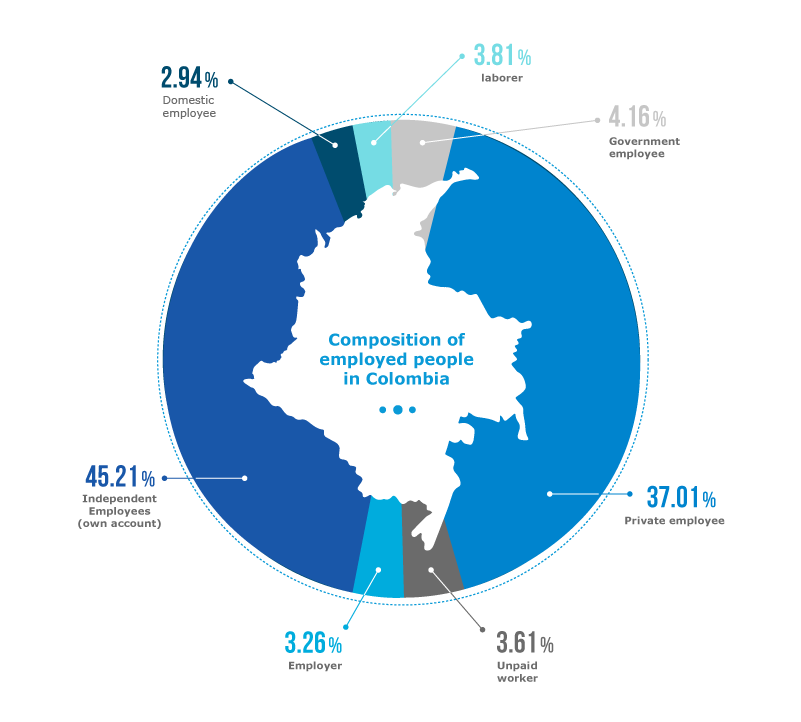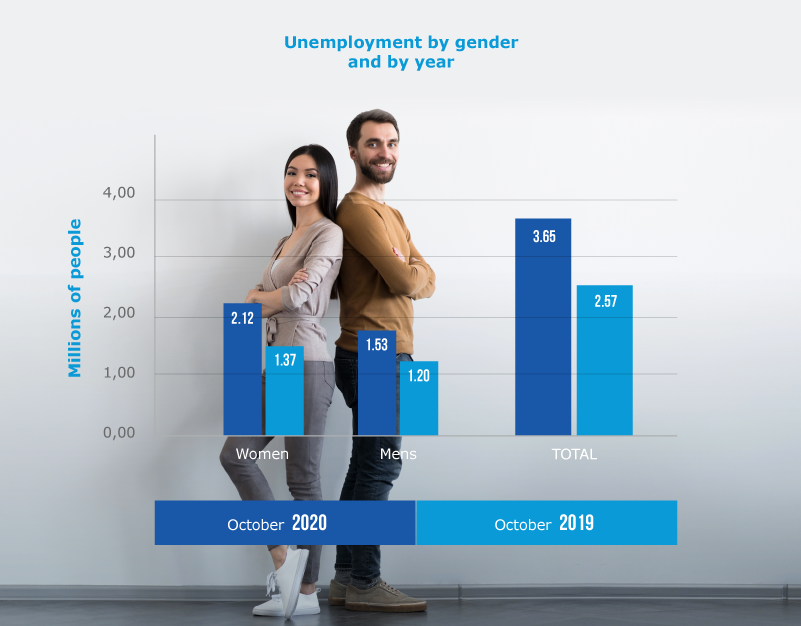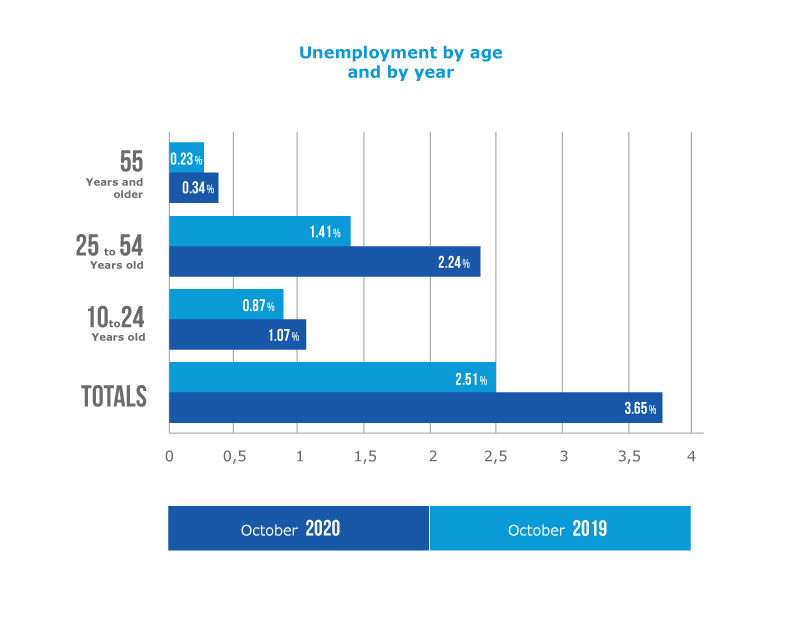Challenges for labor reform in Colombia
Composition of employed persons Colombia
Although Colombia had been gradually reducing unemployment levels in urban areas in the last decade, as a result of the appearance of COVID 19, the projections changed dramatically.
In October 2020, unemployment at the country level was 14.7% (according to DANE figures) and comparing it with the figures of September 2019 (9.8%), the outlook is very discouraging and expectations, although they have been improving in the last 2 months (in April 2020 it was 19.8%, reducing in September to 15.8%) they propose a slow recovery that will initially take all of 2021 to reach figures below 10%.
The current composition of employed persons according to standard categories as of October 2020 is as follow:

Source DANE
In a simple analysis, it is seen that Colombia has a very high population in the category of independent or self-employed (informal), which, added to unpaid workers, reaches 49% of the economically active population in the non-formal economy devoid of social security for the vast majority of this group. This composition places Colombia at levels of very poor quality of employment and at a very high level of vulnerability to situations and circumstances such as those resulting from the pandemic, where nearly 50% of the economically active population saw their income reduced to zero or very high levels, lower than your previous income.
Composition by gender and by age
Disaggregating unemployment information by gender and by age, it is found that unemployment is much more vulnerable and critical for women and for the young population of Colombia in general terms.

The female gender has an unemployment of the order of 38.6% higher than the male gender, which together with the inequity in remuneration puts women in a particularly critical situation. In 2020 compared to 2019 (as of October) it reflects a growth in unemployment of 42%.

By age, unemployment in Colombia grew between 2019 and 2020 in October of each year by 45.4%, becoming much more critical in the young population where figures of the order of 25.0% are reached.
In the population aged 25 to 54, the unemployment rate in October 2020 was 2.24 million compared to 1.41 million in 2019, with an increase of 59%.
Thus, and being clear that the levels of unemployment in Colombia are among the highest in all of Latin America, it must serve the purpose of reducing it both in the younger populations and especially in the female gender.
The next labor reform should then seek to improve the quality of employment (Reduction of informality), generation of equity in remuneration for both genders, and incentivizing employers to generate first jobs and employment for Young people.
The above goals or purposes can be sought through the generation of temporary employment for hours with social benefits and social security, tax relief for employers with hiring of young people and people with disabilities and recognition of equity in remuneration by gender.
With so many needs and gaps, models and reforms consistent with reality and with the purposes are required.
Carlos Mosquera Franco
RPT CONSULTANTS